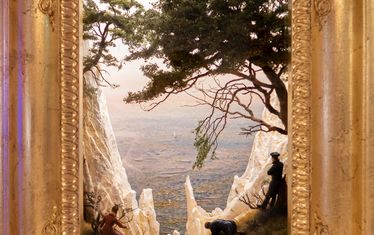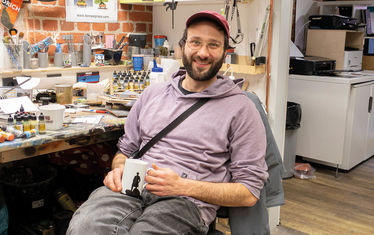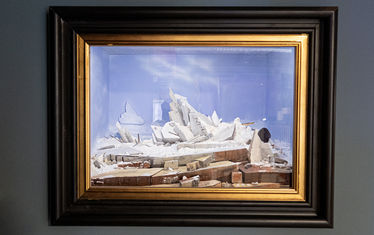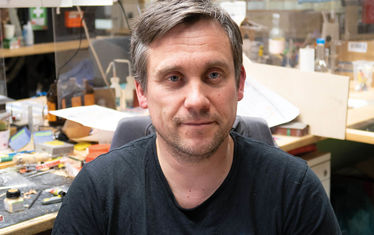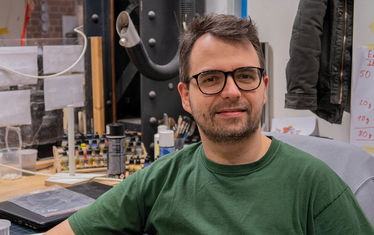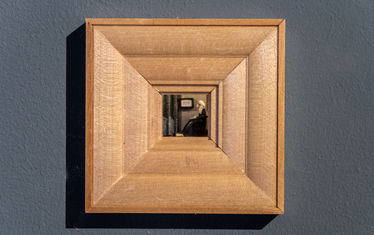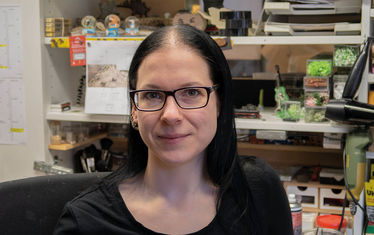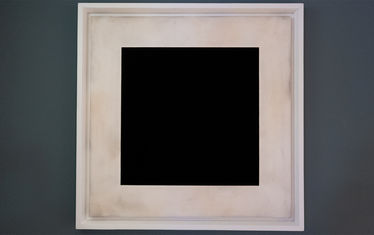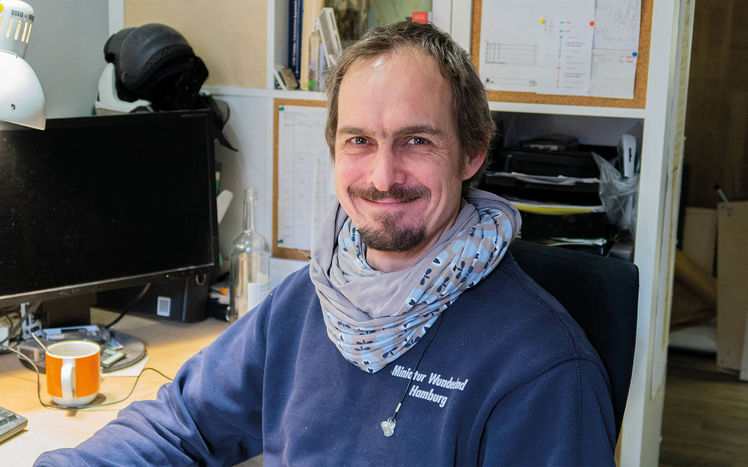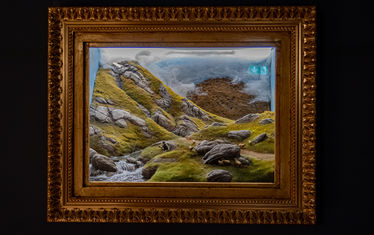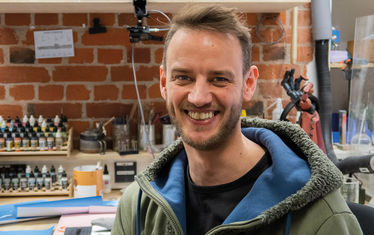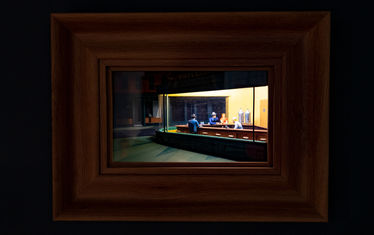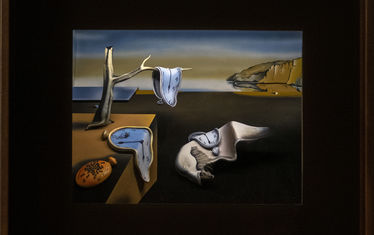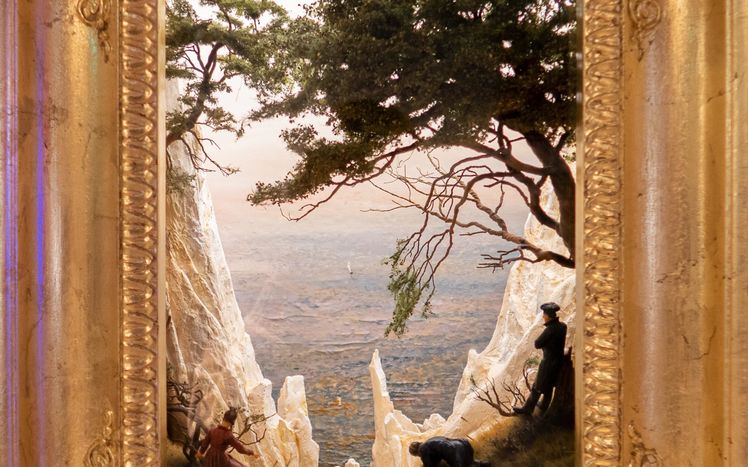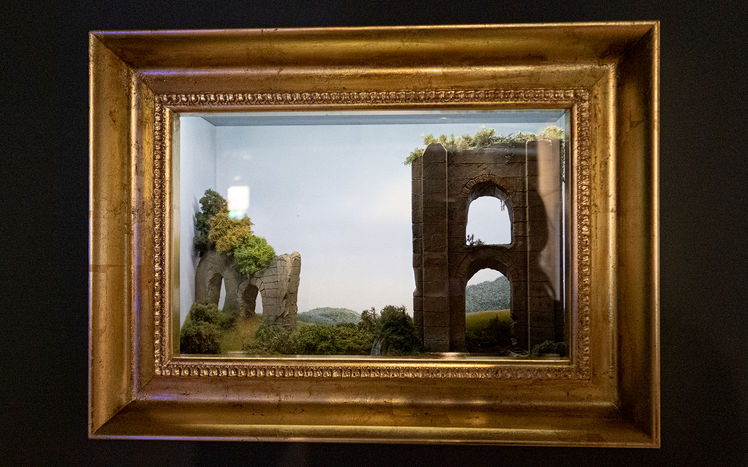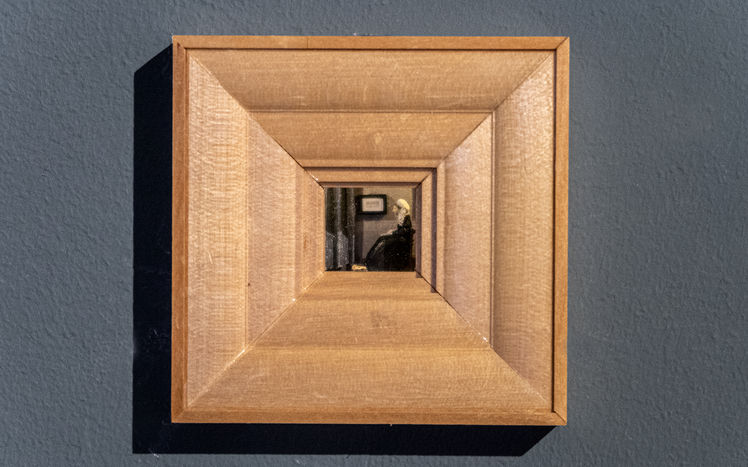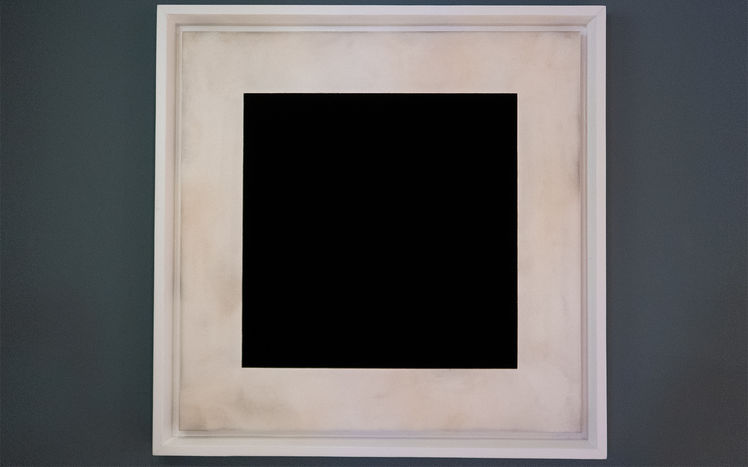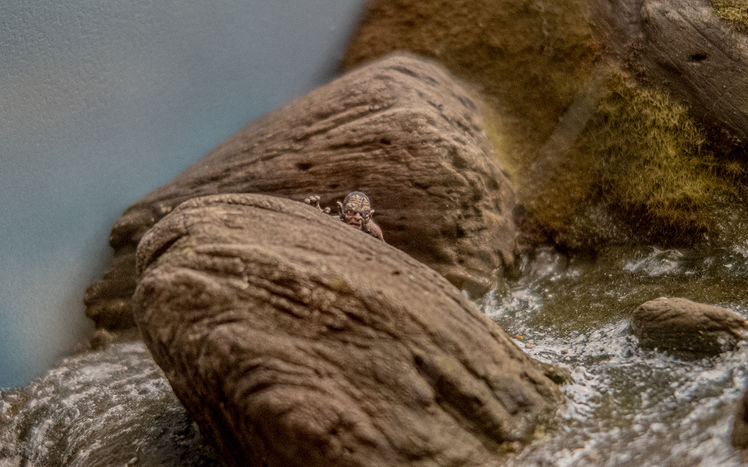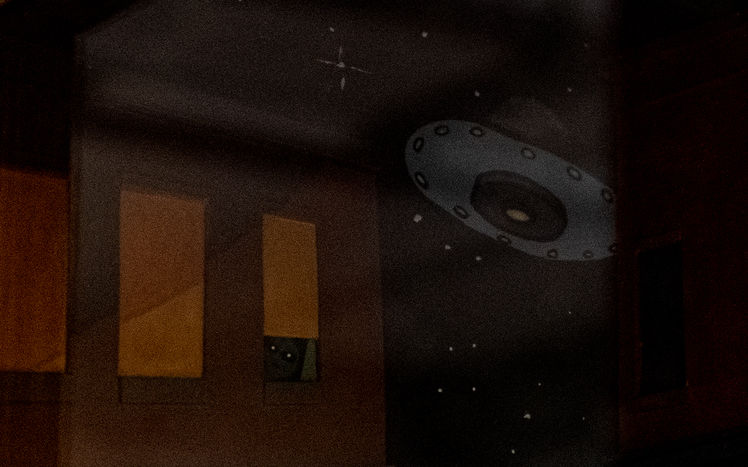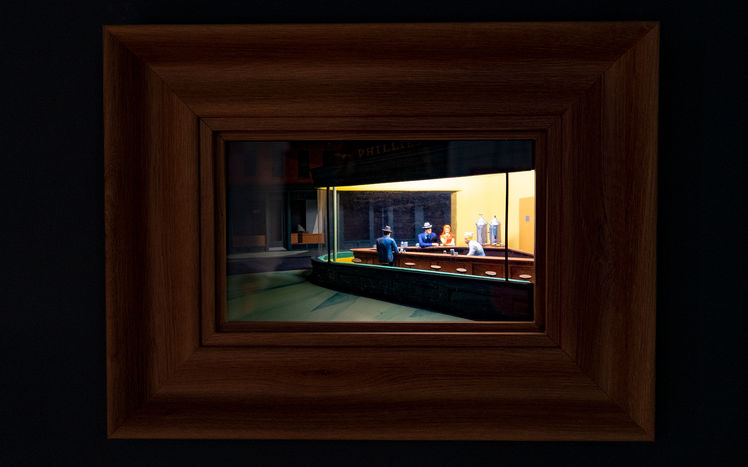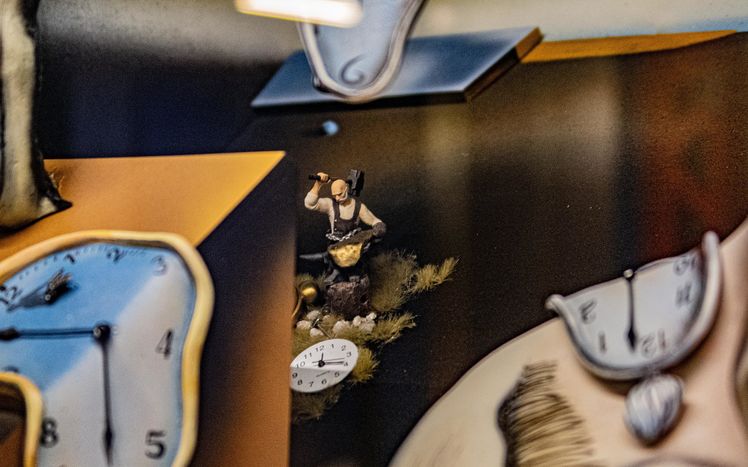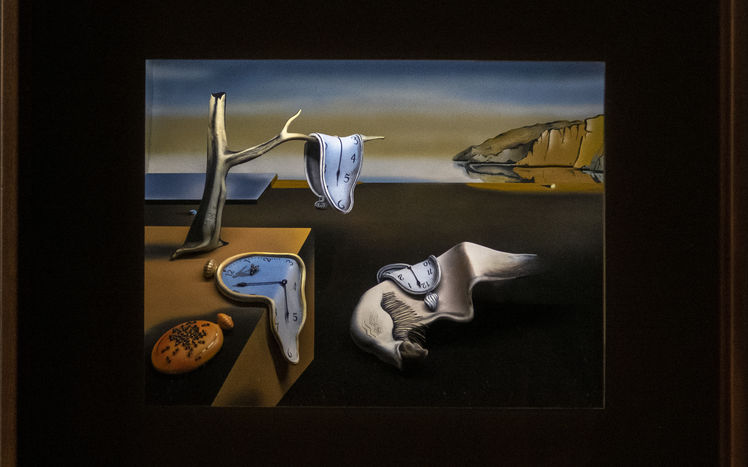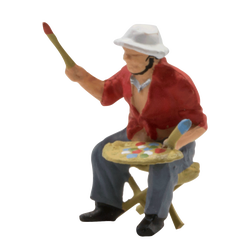
Wunderland 3D Paintings
In our 3D painting exhibition, the model building team has created eight small masterpieces. Frederik came up with the idea for the exhibition during the filming of the RTL TV show "Superklein” – a competition series about modelbuilding. For one task the contestants had to bring a landscape to life by building it into a three-dimensionally diorama within a picture frame. Frederik wondered, whether this could also be done with world-famous masterpieces of painting. With this question in his mind, he entered the doors of our modelbuilding team. Almost one year and thousands of working hours later, you can now see the answer before you.
Discovering new perspectives of art
Each image has its own perfect angle, from which it should be observed from. Use the markers on the floor and view or film the image from there. From this perspective it looks deceptively similar to the original. As you get closer, a two-dimensional becomes a three-dimensional world, in which you can discover what was previously hidden.
"Chalk Cliffs on Rügen" by Caspar David Friedrich – interpreted by Felix Ellhardt
Caspar David Friedrich is the most important representative of early German Romanticism. Born in a small town on the Baltic Sea, he was well acquainted with the rugged nature of northern Germany and the nearby island of Rügen with its famous cliffs. "Chalk Cliffs on Rügen" was painted in the year of his marriage to Caroline Bommer.
With its almost complete abandonment of depth in space and its flat strictness, the work is one of Friedrich's most radical compositions. At the same time, it is one of the most colourful and festive paintings by this deeply melancholic painter.
"Romantic naturalism and melancholy exist here side by side in contrast to each other." - Felix Ellhardt
For Felix, the given composition formed a good basis for representing the work as a three-dimensional image. The challenge, however, was the wide view: "The box should have been three metres long in order to capture the perspective well."
Modelling the tree was the most time-consuming part for him. Here, every branch and every twig was twisted until they resembled the original. With great attention to detail, Felix went so far as to bend the little curl behind the woman's ear with wire and insert it.
A view down the cliff dims the romantic landscape. Someone has dumped their rubbish here. A socially critical message? Perhaps.
The Sea of Ice by Caspar David Friedrich – interpreted by Sönke Freitag
In the winter of 1820/21, Caspar David Friedrich witnessed the ice drifting on the Elbe. Fascinated by the rare natural spectacle, he made three oil sketches of ice floes on the spot. He referred to these when he created his famous painting "The Sea of Ice" a few years later.
The proportions, however, increased to monumental dimensions. Huge ice floes pile up to form a mountain in the centre of this polar landscape. Everything seems still, as if frozen. But despite all the drama, the picture is not a rejection of life, for the sky clears up at the upper edge of the picture.
"Since the angles of the ice edges are all aligned differently, I had to experiment a lot to recreate the illusion of the painting in 3D." - Sönke Freitag
As beautiful and exciting as this picture may be, Sönke would have almost regretted choosing it, because the angles of view keep changing. Sometimes from above on the icebergs, at the same time from below on the edges of some of the ice floes.
Hidden behind the ice is a Covid test, reminiscent of the last pandemic. The test is positive and shows that even this faraway place has not been spared.
Ruinen bei Rom by Johann Martin von Rohden – interpreted by Hendryk Timm
With his atmospheric yet detailed view of nature, Rohden gave German Roman landscape paintings a decisive impetus in the first half of the 19th century. The painting "Ruin near Rome" is one of the first works to be painted on Roman soil. Rohden has effectively set ancient ruins in the picture under the cloudless, light-flooded Mediterranean sky.
"It was a wonderful project to recreate this Mediterranean landscape and hide a surprise in the picture." - Hendryk Timm
Hendryk chose this work because he was interested in the motif of Italy and liked the warmth that the picture emitted. The idea of hiding Asterix and Obelix behind the ruins came to him during the process, because it fitted in very well with the overall picture. Obelix carries a large menhir on his back and fits in perfectly with the landscape. Little Dogmatix can't be missing either and stands faithfully by Obelix's side.
Where might their journey take them?
Whistler's Mother by James Abbott McNeill Whistler – interpreted by Steffi Wöhler
When a model cancelled at short notice, the American artist James McNeil Whistler asked his mother, who lived with him, to pose for his painting. Because it was difficult for the mother to stand for a long time, she posed in a seated position.
"From today's perspective you might imagine she is watching television." - Steffi Wöhler
When Steffi came up with the idea for this painting, she immediately found a model figure that looked like the mother and was already sitting in the right position. She only had to model the bonnet and the dress and build the interior. The figure dictated the scale, so the diorama is much smaller than the others.
A look around the corner to the left reveals a switched-on television. The football match scene from the movie "Werner - Beinhart!" (an animated German movie from the 90s) is playing. "I wanted to create a strong contrast between two eras. I found the idea both absurd and amusing at the same time, that the mother is watching this film in particular."
Black Square by Kazimir Malevich – interpreted by Michel Kraken & Nicolas Salzwedel Böhm
The "Black Square" is one of the icons of modern painting. A square not quite 80 x 80 centimetres. It is not an exact square - its outer edges do not run exactly parallel to the edge of the picture. In 1915, Malevich presented it to the public, together with works by 14 other artists in a gallery in St. Petersburg. Confidently, he declared, "I have painted the bare icon of my time."
"The decision to recreate this work resulted from a sort of defiance and quickly turned out to be a brilliant idea." - Nicolas & Michel
Michel and Nicolas worked together on this diorama. The idea of recreating the black square came about as a protest against the typical landscape motif and was intended to provide a strong contrast in the exhibition. "We wanted to do something completely different. Our work may not have some of the most impressive visual depth, but it is still captivating with its depth in meaning."
To realise the colour effect, they used the acrylic paint "Musou Black" for the first time in Wunderland.
This colour is considered as the "blackest black" in the world and absorbs 98.2% of light. The challenge was to get the lighting exactly right so that when you look at it, you don't see your own shadow. If you look at the picture from the right position, it seems as if you are looking into infinity.
Wandering Shadows by Peter Graham – interpreted by Lennert Meyer-Puttlitz
Graham's observations of fleeting effects in nature provided the basis for his painting. He captured the transient character of clouds as they float around the mountain tops and descend into the valleys, and recorded their wandering shadows across the slopes. The sense of movement and constant change is echoed in the mountain stream flowing down to the gushing river. One knows too that the presence of the fisherman and sheep, which emphasises the vastness of the rocky terrain, is also temporary.
"The scenery is idyllic, but there is something mysterious behind it. You don't know what will happen next." - Lennert Meyer-Puttlitz
Lennert's enthusiasm for the Scottish Highlands and his love of landscape modelling helped him in his decision to choose this painting.
The biggest challenge was the compressed perspective and lighting conditions. He had to model the fisherman from scratch and make the sheep in different sizes to fit the landscape. "Unfortunately, my version turned into a beautiful summer's day instead of a harsh cloud storm brewing. Next time I would do things differently with the play of light and shadow here."
At the river, a familiar figure from Lord of the Rings is hiding. He waits near the fisherman. Perhaps to steal a fish at the right moment.
Nighthawks by Edward Hopper – interpreted by Teresa Liening
In an all-night diner, three customers sit at the counter opposite a server, each appear to be lost in thought and disengaged from the others. The composition is tightly organized and spare in details: there is no entrance to the establishment, no debris on the streets.
About Nighthawks Edward Hopper recollected, “unconsciously, probably, I was painting the loneliness of a large city.”
"For me, this piece triggers a sense of longing, even though it doesn't really fit this dark time. " - Teresa Liening
For Teresa, on the other hand, this painting triggers longing. She loves New York and has been there twice herself. The decision for this work came easy to her , especially since she prefers cities to landscape scenes for her model work. "It was quite a challenge to get this angle to look like the original." For an even more expressive effect, the light source was installed inside the diner and shines outside onto the street.
A look around the corner reveals a UFO in the dark night sky and an alien lurking behind the window. According to famous films, New York in particular is a coveted spot for an unexpected visit from extraterrestrial creatures.
"Recreating a surreal world as a three-dimensional space brings a whole new set of challenges." - Steffi Wöhler
Steffi was fascinated by the challenge of transforming surreality into reality and quickly chose this work by Dalí. However, she also faced some challenges. "It's not a real landscape as you usually see it, which is why it was more difficult to create the right perspective. I had to try a lot until it became true to its original piece." She applied the colours with an airbrush gun. For this, the lighting in the painting was installed in advance so that the colours would not distort in the end.
A brief look behind the scenes shows a blacksmith at work. Whether he is the cause of the scenery or wants to straighten the clocks again is left to everyone's interpretation.
